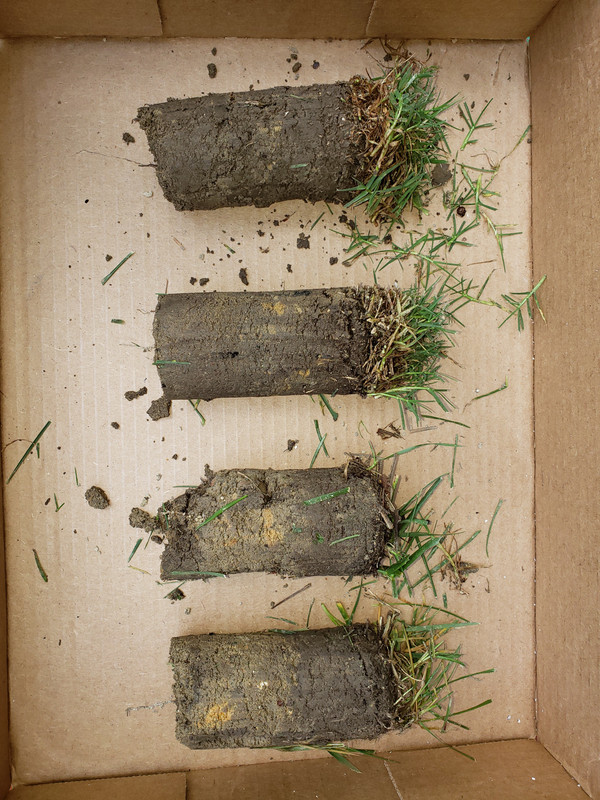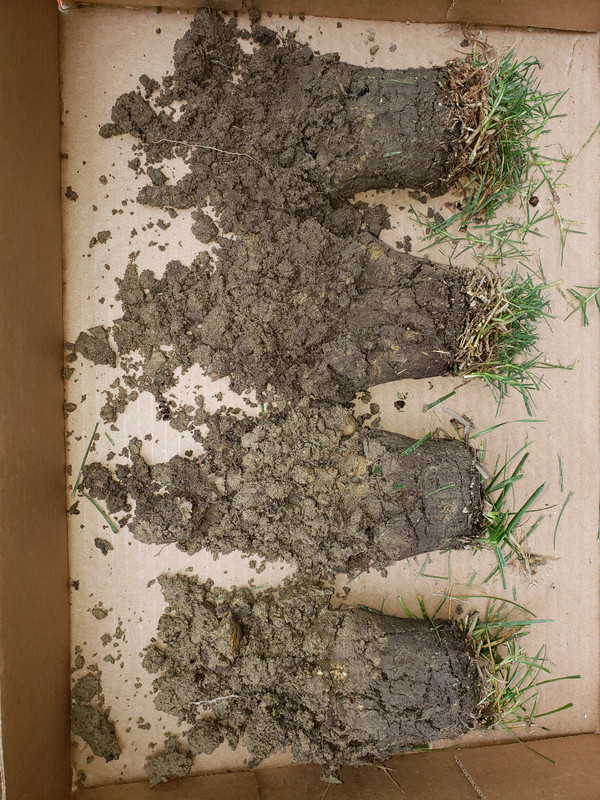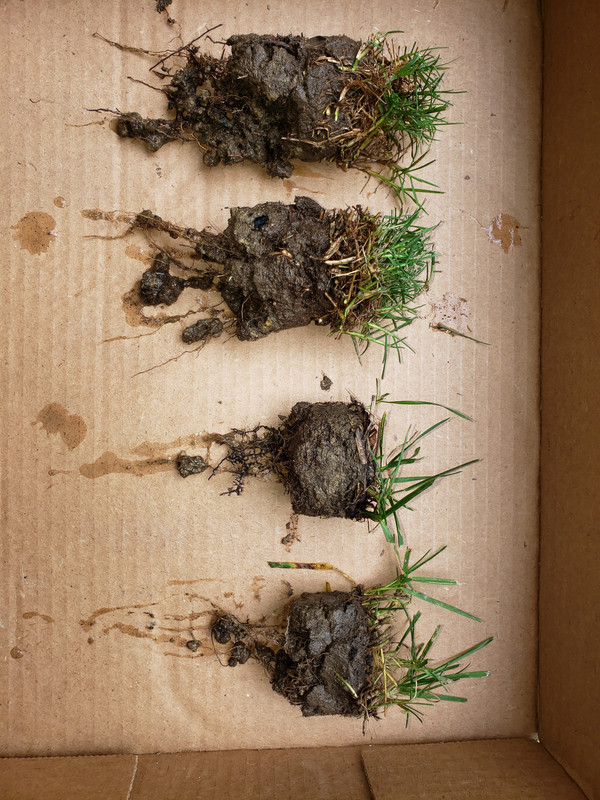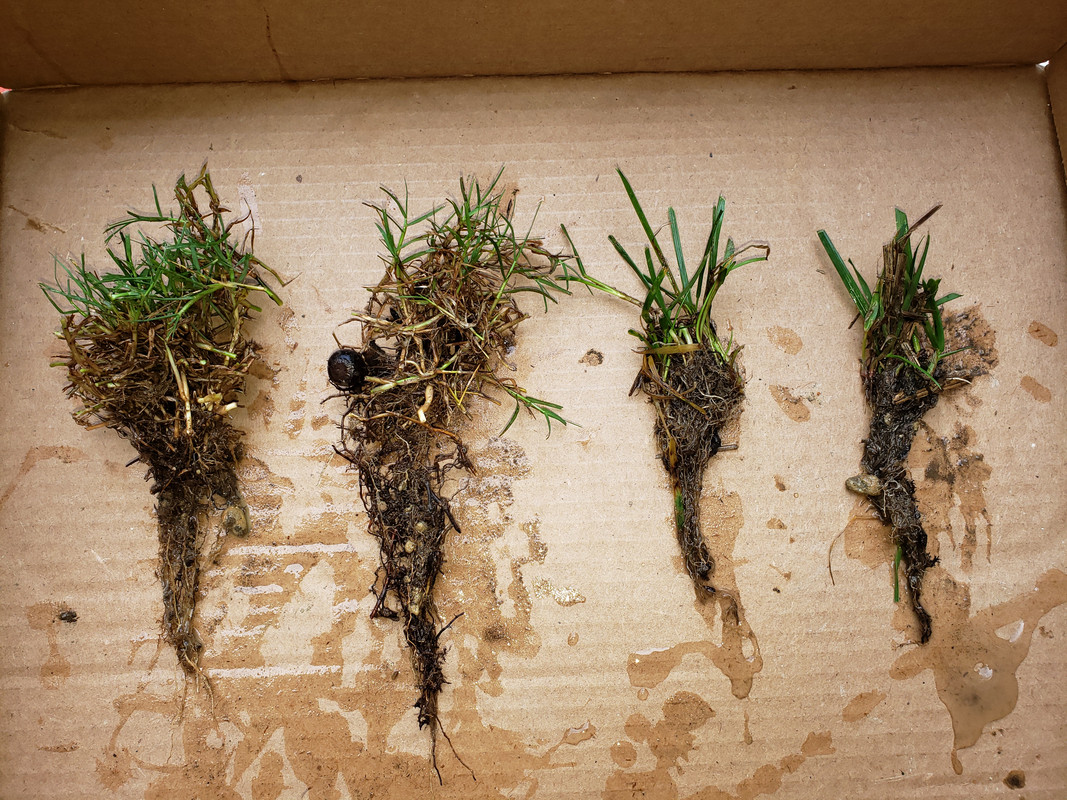Just posted this in my journal but figured the main warm season board might find this interesting...
So in between rain drops, I took 2 core samples from my front yard which I've been religiously applying humic acid (Humic DG, Air8 and Humic 12) since January and 2 cores from my side and back yard which I haven't touched.
Very, very interesting results...

Top 2 plugs are humic treated, bottom are native soils which are clay, sand and pebble.
So in between rain drops, I took 2 core samples from my front yard which I've been religiously applying humic acid (Humic DG, Air8 and Humic 12) since January and 2 cores from my side and back yard which I haven't touched.
Very, very interesting results...

Top 2 plugs are humic treated, bottom are native soils which are clay, sand and pebble.







